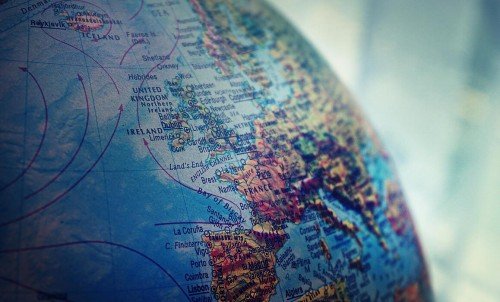Tools for Policy and the Planet

The 21st century has brought both extraordinary innovation and unprecedented environmental challenges. From rising global temperatures to resource scarcity, the planet is sending clear signals that our current economic models cannot be sustained indefinitely. Policymakers are under increasing pressure to make decisions that not only boost growth but also protect ecosystems and ensure social equity. To succeed, they need tools that track change across multiple dimensions of sustainability. These tools, known as green economy indicators, help governments, businesses, and citizens measure progress in ways that traditional statistics like GDP cannot capture. But to have real impact, these indicators must be understood, communicated, and trusted by a wide audience.
Why Tracking Change Matters
Indicators are more than just abstract numbers. They serve as guiding lights for decision-making. If a country measures only economic growth, policies may prioritize short-term financial gains at the expense of the environment. But when governments track carbon emissions, water usage, biodiversity health, and access to green jobs, they can steer policies toward balance and long-term resilience.
Tracking change through robust indicators allows:
-
Accountability – ensuring leaders are held responsible for climate promises.
-
Transparency – giving citizens a clear view of progress.
-
Collaboration – enabling governments, NGOs, and businesses to align efforts.
Tools That Drive Effective Policy
Modern policymaking relies on a diverse toolbox. Among the most important tools are:
-
Environmental accounts that integrate nature into national statistics.
-
Climate dashboards tracking emissions, renewable energy, and adaptation.
-
Social equity indicators that reveal how green policies affect different groups.
-
Natural capital metrics that measure the value of forests, water, and biodiversity.
By using these tools, governments can assess trade-offs and design policies that protect both people and the planet.
Communicating Indicators Beyond Policy Circles
Even the most sophisticated indicators are useless if they remain confined to expert reports. Citizens, businesses, and civil society must understand them to support meaningful change. Clear communication, through websites, visual dashboards, and public campaigns, transforms complex data into accessible insights. Interestingly, the techniques used to share green economy indicators often parallel those used in the digital world. Just as policymakers want their messages to reach citizens, organizations want their content to reach audiences online. That’s why many institutions increasingly borrow strategies from digital marketing, including SEO services, to make sustainability data more discoverable and engaging.
For example:
-
Governments may optimize climate data portals so that citizens find them easily through search engines.
-
NGOs can use SEO services to amplify campaigns about renewable energy or conservation.
-
Businesses reporting on their sustainability performance may optimize pages so investors and customers can find them quickly.
This cross-pollination between policy and digital communication highlights a key truth: indicators only matter if people can access and act on them.
Linking Local and Global Action
Green economy indicators also help connect local realities to global goals. A city tracking air quality improvements can show direct contributions to the UN Sustainable Development Goals (SDGs). A country reducing fossil fuel subsidies can demonstrate alignment with the Paris Agreement. Here again, visibility is essential. Local initiatives may go unnoticed unless shared widely. That’s why NGOs, community groups, and even municipal governments increasingly rely on modern communication strategies, including SEO services, to spotlight their progress. By making sustainability achievements visible online, they inspire replication and encourage accountability.
The Challenge of Consistency
While the demand for green indicators is growing, one challenge remains: consistency. Different countries and regions often measure sustainability in different ways. Without standardized methods, it becomes difficult to compare progress or coordinate international policy. Efforts like the UN’s SEEA (System of Environmental-Economic Accounting) and the OECD’s Green Growth Indicators are steps toward harmonization. But ensuring global comparability will require ongoing collaboration, capacity building, and investment in reliable data systems.
The Role of Business and Civil Society
Businesses are not just subjects of policy, they are also key players in shaping and reporting indicators. From tracking carbon footprints to publishing sustainability reports, companies use green metrics to guide decisions and communicate value to stakeholders. Civil society groups also play a watchdog role, using indicators to hold both companies and governments accountable. Their advocacy campaigns often depend on broad public awareness, which again highlights the relevance of digital reach. Whether through social media strategies or professional SEO services, amplifying these messages ensures sustainability data doesn’t stay buried in technical documents.
A Future Defined by Data and Engagement
The future of sustainable policy will be defined not only by the quality of indicators but also by the way they are communicated and used. Tracking change is about more than producing reports, it’s about engaging society in a collective journey toward a greener future. Green economy indicators, supported by transparent communication and amplified through digital tools like SEO services, can become powerful drivers of accountability and action. They transform sustainability from an abstract ideal into a measurable, trackable, and shared responsibility.
Conclusion
If the 20th century was defined by GDP, the 21st century must be defined by green economy indicators. Tracking change means looking beyond short-term growth to consider the health of ecosystems, the inclusivity of economies, and the resilience of societies. By combining strong measurement tools with effective communication strategies, including the smart use of SEO services, policymakers, businesses, and citizens can align efforts, bridge information gaps, and accelerate the transition to a greener planet. The challenge is urgent, but the tools exist. What remains is the will to use them wisely and the courage to let data shape a more sustainable future.